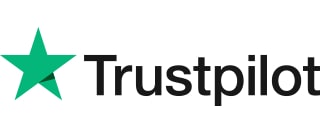There are very few jokes that are both set-up and punchline in a single sentence, but the prime example is, “I’m from the government, and I’m here to help you.”
Well, today, it’s not funny. It’s profitable.
On Dec. 20, President Biden signed the SECURE Act 2.0. Politicians love acronyms, so SECURE stands for “Setting Every Community Up for Retirement Enhancement.” (I didn’t say they were good at it.)
You might’ve heard this acronym before, because in 2019, Congress passed the first SECURE Act. It was quite an achievement, mostly because it was bipartisan. When was the last time that happened?
SECURE 1.0
The original SECURE Act was the biggest overhaul of our retirement system in over a decade. It acknowledged some new realities, like the fact that more Americans are working multiple part-time jobs – so they got access to employer-sponsored retirement plans that were previously open only to full-timers. Also, small businesses faced less hassle and paperwork setting up retirement for their employees.
There were scores of other changes, too. Like letting 401(k) plans offer annuities and delaying the mandatory age when you’re forced to take what are called “required minimum distributions” from your retirement plans.
When President Trump signed the SECURE Act in 2019, a lot of political observers wondered if that would be the last time Republicans and Democrats agreed on anything. Well, it was such a success, they agreed to beef it up.
SECURE 2.0
As Debt.com reported back in April, when the House of Representatives passed what became known as SECURE 2.0, “The last lingering sense of bipartisanship was on display.”
Here are my three favorite parts of the $1.7 trillion act…
- Penalty free withdrawal: If you’re not yet 59½ – don’t ask me why they do that – you can take up to $1,000 from a tax-deferred retirement plan for an emergency. That’s better than putting a $1,000 emergency on a credit card charging you 20 percent.
- Federal retirement match: If you qualify as low income, the federal government will add up to $1,000 to your retirement account if you save up to $2,000 on your own. Of course, there are a lot of rules. First, “low income” depends on several factors, and you must have a qualified retirement account. Still, it’s free retirement money.
- Emergency savings: More than half of Americans can’t cover a $1,000 emergency. That led Congress to add something new to SECURE 2.0. Your employer can now let you set aside up to $2,500 in a separate emergency fund, just like your retirement account. You contribute through an automatic payroll deduction, just like you do with your retirement. While the government isn’t matching your contribution, this makes it much easier to save for trying times.
There’s much more in SECURE 2.0, of course. For instance, when businesses start new 401(k) plans, their employees are automatically enrolled in it. They can opt out, which makes saving for retirement look a lot like subscriptions and email newsletters. But the hope is that this will force more Americans to save.
There are also adjustments to the mandatory age for 401(k) and IRA withdrawals, a new catch-up contribution, and adjustments to “qualified longevity annuity contracts,” aka QLACs. Don’t know what I’m talking about? Don’t worry. One thing the SECURE Acts haven’t changed is the free advice available to you.
As a longtime insurance firm owner, my staff and I have been answering many questions from my clients. And of course, Debt.com is here for you, too. Speak to a professional about how the SECURE Act 2.0 can help you save for retirement, and let us help you get out of debt now.








